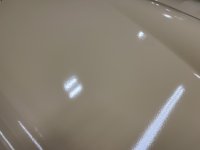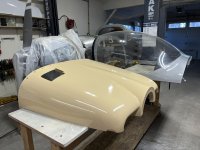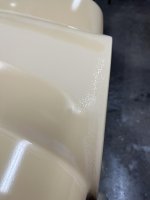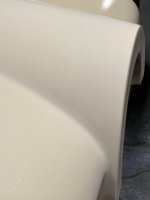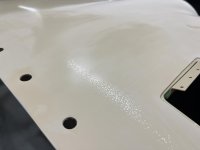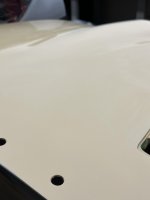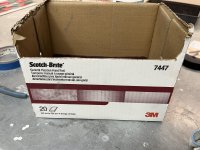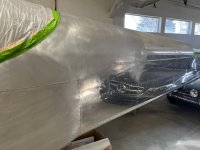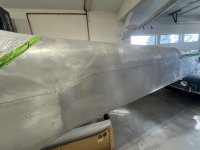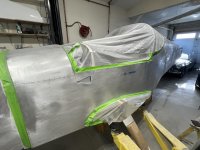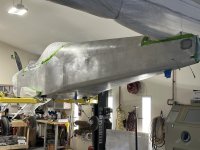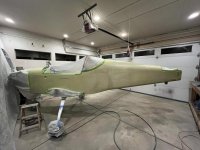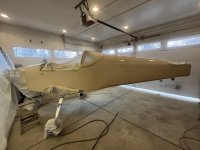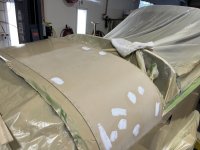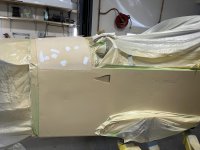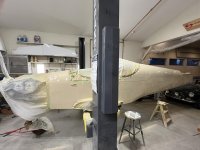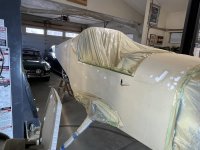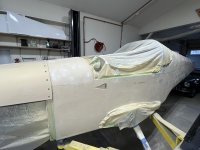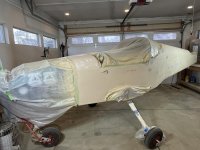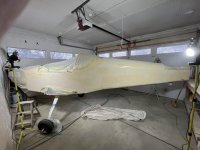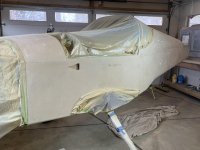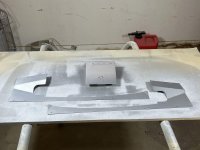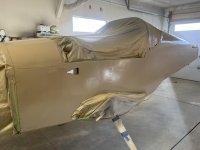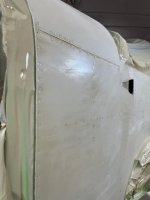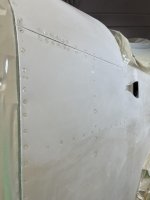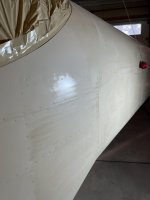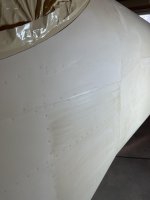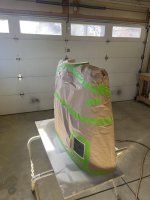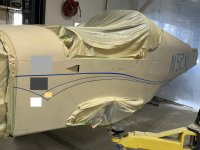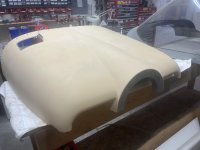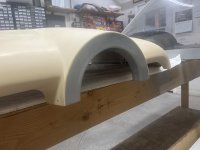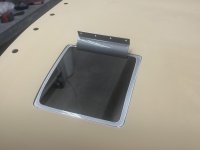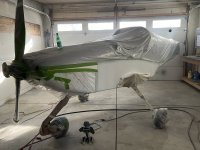Upper Cowl Prep for Paint
I primed the upper cowl a while back and today I began P320 sanding to get it ready for the next coat of primer.
The molding process for the fiberglass leaves a honeycomb texture on the exterior surface. Unless it is desired for this show through the paint (not) it has to be covered in primer, sanded, then primed again before painting.
So, I did the first coat of primer and today I sanded it with P320 to get it flat. Tomorrow, I will apply the second coat of primer and sand it with P400 in preparation for painting.
Here is what the surface looks like after the primer and before sanding it flat.
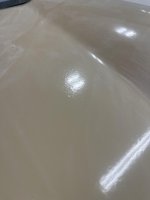
After sanding with P320 the surface looks pretty flat. We'll find out tomorrow when the second application of primer goes on.
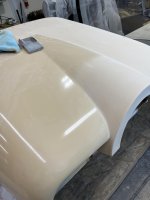
I primed the upper cowl a while back and today I began P320 sanding to get it ready for the next coat of primer.
The molding process for the fiberglass leaves a honeycomb texture on the exterior surface. Unless it is desired for this show through the paint (not) it has to be covered in primer, sanded, then primed again before painting.
So, I did the first coat of primer and today I sanded it with P320 to get it flat. Tomorrow, I will apply the second coat of primer and sand it with P400 in preparation for painting.
Here is what the surface looks like after the primer and before sanding it flat.

After sanding with P320 the surface looks pretty flat. We'll find out tomorrow when the second application of primer goes on.




